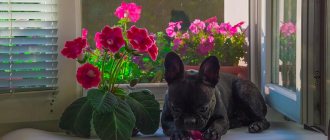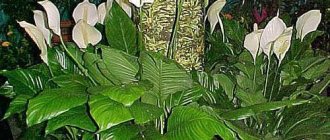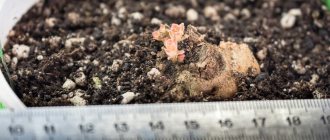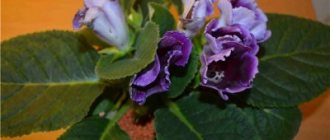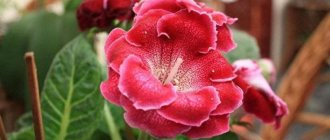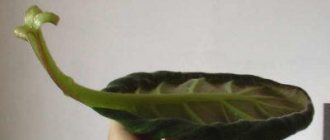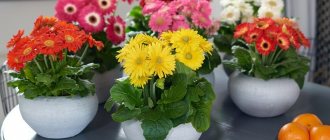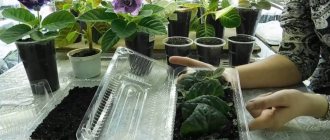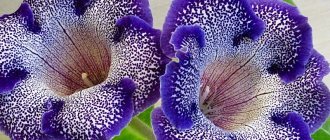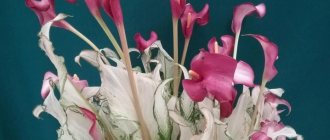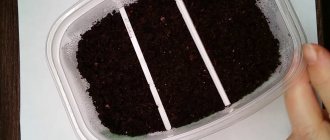Beautiful Sinningia, better known to gardeners as gloxinia, has been receiving increased attention from indoor plant lovers for several decades.
What is so attractive about gloxinias, photos and names of varieties of which are more numerous than ever? For many flower growers, their love for this culture began in childhood with large velvet bells stolen from their grandmother’s windowsill. In those days, it was almost impossible to find gloxinia other than deep purple or crimson in color. Today, breeders have obtained hundreds of plants of amazing beauty, variety of shapes and colors, ready to grow and bloom magnificently in indoor conditions.
It’s unlikely that our grandmothers suspected that studying photos and names of gloxinia varieties could take more than one hour. The collections of current fans of this flower include:
- white and pink, purple and red varieties;
- varieties with polka dot flowers;
- plants with bells, decorated along the edge with a bright contrasting border.
To simplify classification, flower growers have introduced a division of gloxinias according to the size of the bush and the characteristics of the corollas.
Classification of Gloxinia varieties
Depending on the size of the aboveground part of the plant and the rosette formed, hybrid gloxinias are divided into miniatures, which do not grow more than 20 cm, and standard plants, the diameter of the leaf rosette of which can exceed 30 cm. There are also a number of varieties that occupy an intermediate position in this classification.
The corollas of modern plants may consist of one or several rows of petals. Terry gloxinias are incredibly popular, because their bell-shaped flowers are more magnificent than simple ones, and their shape most closely resembles a camellia or a garden rose.
Based on the type of color, modern varieties of gloxinia are divided into plain, calico and tiger.
- Solid flowers are evenly colored in different tones from white, light pink or purple to purple and deep violet. Only the spot deep in the neck may be lighter or white.
- Corollas with a calico type of color are covered with uniform spots or speckles.
- Tigers are decorated not only with elegant polka dots, but also with a border around the edge of the petals.
Having seen the inscription gloxinia “Tigrina Red”, Blue or White on the package with the tuber, you can be sure that the manufacturer offers to grow a flower with an original corolla of a rich red or purple hue. However, it will not be possible to obtain the same plant from seeds, because hybrids reproduce only vegetatively.
In some varieties of gloxinia, the flowers have the shape not of the usual bell, but of a thydea, that is, a shoe, more often found in other plants belonging to the Gesneriaceae.
Gloxinias love bright, but not direct rays of the sun, are afraid of drafts and sudden temperature changes, and respond very negatively to excessive watering. It may seem that gloxinia is very capricious. But those who master plant care will not regret it. With due attention, the green pet blooms regularly from spring to autumn.
By autumn, the number of buds decreases, and then the aboveground part of the gloxinia fades. The plant begins a dormant period, during which life is preserved only in the tuber.
At home, a gloxinia plant can be obtained from a tuber planted in the spring or from seeds. You can propagate your favorite variety by rooting a healthy leaf. Thanks to this, many cultivated varieties are now more accessible than before.
Both foreign and Russian enthusiasts are engaged in the selection of gloxinia. The industrial varieties offered to amateur flower growers by large flower growing companies in Holland and other countries are widely known. Their assortment includes simple and double gloxinias, conventionally grouped according to the shape of the flowers, the size of the corollas and rosettes.
Where and how to plant it
Typically, the dormant time for gloxinia is mid-winter ; the nodules awaken by the end of February. Sometimes it happens that development is delayed, and the buds on the tuber swell only towards the end of spring. Planting time is determined by the readiness of the buds.
The pot is chosen with a margin, 6 cm larger than the nodule. The height of the container must be calculated for 4 drainage layers and soil with a tuber. Too large pots are not needed: this is how powerful roots develop, not the plant itself. The flower will dry out and wither. Drainage holes are required, since gloxinia does not like stagnant moisture.
Group of varieties of gloxinia Avante, Avanti
A good example is Gloxinia Avante or Avanti. This group of varieties includes many color options. Most often, gloxinias of this variety are offered in the form of seed sets for self-cultivation. Mature plants have a compact leaf rosette, against which simple velvety flowers seem even larger and more impressive.
The most common Avanti hybrids include gloxinia:
- Avanti Light Violet;
- profusely blooming white, with wavy edges Avanti White;
- with light lilac or bluish flowers, decorated with a wide white wavy border Avanti Blue with White Edge, or Blue lace;
- Scarlet, with velvety wine-red Avanti Scarlet flowers.
Gloxinia Yesenia
One of the terry Dutch hybrids, widely cultivated all over the world, is called Yesenia. A medium or large plant up to 30 cm high forms a rosette of green leaves with short petioles, above which spectacular double flowers rise. The half-opened corollas resemble pink buds, but when a crimson or crimson flower on a short peduncle opens completely, a white or pinkish border appears along the edge of the petals. The hybrid Gloxinia Yesenia, as in the photo, is characterized by long bouquet flowering.
Variety of species
Botanists count about 25 species of this beautifully flowering plant. However, a huge number of domesticated hybrids have been bred from two common species - Gloxinia beautiful and Gloxinia royal. Breeders have done a lot of work to create hybrid varieties for indoor keeping. Let's look at the main types of gloxinia, originally discovered more than three hundred years ago.
- Speckled Gloxinia (Gloxinia perennis). Tall variety up to 60-70 cm. Flowers are simple white, lilac, purple, burgundy. Combined in several pieces on a variegated petiole. The leaves are fleshy, oval, the upper part is green, the lower part has a reddish tint. Another name for this species is also found - Gloxinia perennial.
- Royal Gloxinia (Gloxinia regina). It is a low bush with wide dark green pubescent leaves streaked with silver veins. The stems are thickened. The buds are large purple, inclined downwards.
- Beautiful Gloxinia or beautiful Sinningia speciosa (Sinningia speciosa) - looks very similar to the royal one, but its leaves are of a lighter, uniform color, and the flowers have a purple and violet hue.
Over the course of a couple of centuries, as a result of progressive breeding work, more and more new varieties appeared from these original species. We present to you the most famous indoor varieties of gloxinia.
Gloxinia Hollywood
The purple flowers of Gloxinia Hollywood seem to be cut out of thin velvet. The petals of a simple flower can be darker or lighter. At the same time, the deep neck always has a light lemon tint and is decorated with contrasting purple dots. The hybrid is characterized by lush mass flowering, a small rosette of green leaves and high decorative value.
Among the mass of options, the most striking and memorable is the so-called Black Hollywood with very dark, almost black flowers without a light core.
Gloxinia Blanche de Meru
The Gloxinia Blanche de Meru shown in the photo is easily recognizable by its large flowers with crimson petals and a white throat. The leaf rosette of the plant reaches 25 cm in diameter, and good care helps to maintain not only velvety large leaves, but also stimulates long-term, lush flowering from late spring to early autumn.
If gloxinia is exposed to direct sunlight, both velvety leaves and flowers may suffer. There are fewer of them, the opening buds are paler in color and fade faster.
Features of reproduction and cultivation
Propagating Sinningia is not at all difficult; this can be done in several ways: cuttings, tubers, seeds . Growing by cuttings is the most common and reliable method. Other reproduction options are no less effective.
Cuttings
Use the entire sheet or part of it . You need to take a young leaf with a petiole up to 3 cm long. Place moist soil in a plastic glass and place the leaf to a depth of no more than 1 cm. Cover with film and place in the light. After a month, the film is removed, during which time roots appear. After a couple of months, the leaf forms “babies”. It is removed, and the young plant with the “babies” is planted in a pot.
Watch the video on how to properly propagate gloxinia by leaves.
Tubers
To propagate by nodules, they are taken out and inspected for the presence of rot. Healthy material is soaked in fungicide for half an hour at the rate of 10 g per 0.5 liter of water . Plant them in the ground with their eyes facing up and wait for the leaves. After 5 leaves appear, the tuber is divided, leaving a pair of leaves on each part. The halves are placed in fungicide, dried and powdered with charcoal. Planted in the ground and watered the next day.
We invite you to watch a video on how to plant this wonderful plant with tubers.
Seeds
The container is filled with pre-disinfected soil . The seeds are sprinkled with sand and spread over the surface, lightly sprayed with water. Cover the container with glass or film and place it in the light. The temperature should be +25 °C. Every day the glass is removed and the crops are ventilated. Shoots will appear in a month.
Important! The first flowers will appear after 9 months, but they are removed: the plant has not yet grown strong and is not able to fully bloom.
Gloxinia terry is an excellent indoor plant , very unpretentious and pleasing with its beauty for a long time. It will fit perfectly into any interior, decorate a living room or bedroom, and is suitable for decorating shelving. Sinningia is a great gift for your beloved mother or sister.
Gloxinia Shagane
Gloxinia selection is carried out not only by specialists from large floriculture centers, but also by amateur enthusiasts. In recent years, such proprietary varieties from Russian and foreign breeders have gained incredible popularity.
Today there are thousands of varieties of gloxinia, photos and names of which awaken imagination, and the appearance of the flowers forces flower growers to replenish their collections again and again.
Terry gloxinia with large bell-shaped flowers, light leaves and harmonious peduncles was bred by breeder E. Slyusar. Gloxinia Shagane is a very beautiful purple tiger. The corollas with a short greenish throat are decorated with a bright violet-blue border. Most of the petals are white and strewn with purple speckles of varying sizes and intensities.
History of origin
The very first species of gloxinia that was discovered is called Gloxinia speckled. It was discovered in Brazil in 1785. However, the mother of all modern species of this plant is Gloxinia Beautiful, brought from the tropics of America at the beginning of the 19th century. In 1825, Gloxinia's closest relative was described.
The main difference between them is the structure of the flower and the presence of a tuber in the latter. The flower was brought to Kew Botanic Gardens near London and was named Sinningia, in honor of the outstanding botanist Wilhelm Sinning. Later, after describing the botanical classification of the genus, scientists determined that Gloxinia would be more correctly classified in the genus Sinningia. But the name “gloxinia” has already been established in gardening, so both names are still used among scientists and specialists.
You may be interested in reading articles by our experts about the peculiarities of growing such varieties of gloxinia as: Rosalind, Brokada, Yesenia, Shagane, pink, White Terry, Krasnoyarje and Red Riding Hood, Sonata, Kaiser Wilhelm and Friedrich, as well as climbing.
Gloxinia Cleopatra
Calico-colored gloxinias are no less spectacular than tigrines or plain flowers. Terry gloxinia Cleopatra immediately stands out from other varieties. It has large double flowers of white color, which are richly decorated with purple and lilac polka dots. The edges of the petals are corrugated, and the speckled pattern on them becomes smaller and lighter. The flower has a pinkish neck, also powdered with crimson and crimson spots and streaks. A strong plant with large leaves thanks to its short peduncles, it is very compact and, with proper care, maintains lush bouquet flowering.
Common diseases and pests
Late blight is one of the most severe fungal diseases of gloxinia, affecting the leaves and then the entire plant. The outer part, the petioles, darken and become covered with a gray coating.
Reasons: excess dampness, mustiness, sudden temperature rise. It can only be cured at the very beginning with Bordeaux mixture and copper sulfate.
Powdery mildew is another type of fungus that covers the plant with white spots. The entire flower is affected and it dries out.
Causes: high humidity at low temperatures. Treat with a weak solution of potassium permanganate or copper oxychloride, drugs “Topaz”, “Skor”. Sometimes antibiotics are taken, such as penicillin and streptomycin.
Gloxinia Winter Cherry
Unfortunately, the author of this magnificent variety is unknown, but this does not detract from the merits of the plant with bright double flowers of original color. Gloxinia Winter Cherry is a semi-miniature plant, so its corollas are small, but unforgettable. White bells are densely strewn with large cherry spots. The calico color of the flowers becomes somewhat lighter towards the wavy edges. The shape of gloxinia bells is very similar to fantasy roses. The variety is characterized by small green foliage with a fleecy surface.
